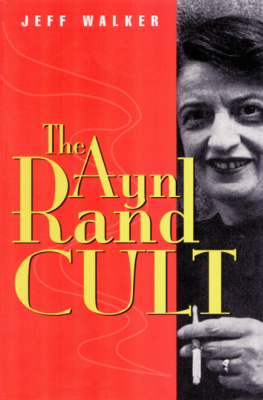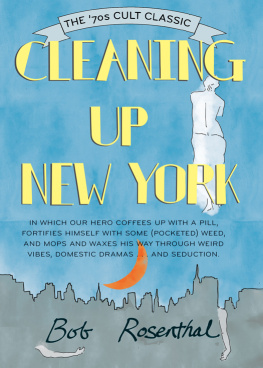Loibner - The Folkboat story: from cult to classic-- the renaissance of a legend
Here you can read online Loibner - The Folkboat story: from cult to classic-- the renaissance of a legend full text of the book (entire story) in english for free. Download pdf and epub, get meaning, cover and reviews about this ebook. City: Dobbs Ferry;NY, year: 2002, publisher: Sheridan House, genre: Home and family. Description of the work, (preface) as well as reviews are available. Best literature library LitArk.com created for fans of good reading and offers a wide selection of genres:
Romance novel
Science fiction
Adventure
Detective
Science
History
Home and family
Prose
Art
Politics
Computer
Non-fiction
Religion
Business
Children
Humor
Choose a favorite category and find really read worthwhile books. Enjoy immersion in the world of imagination, feel the emotions of the characters or learn something new for yourself, make an fascinating discovery.

- Book:The Folkboat story: from cult to classic-- the renaissance of a legend
- Author:
- Publisher:Sheridan House
- Genre:
- Year:2002
- City:Dobbs Ferry;NY
- Rating:4 / 5
- Favourites:Add to favourites
- Your mark:
- 80
- 1
- 2
- 3
- 4
- 5
The Folkboat story: from cult to classic-- the renaissance of a legend: summary, description and annotation
We offer to read an annotation, description, summary or preface (depends on what the author of the book "The Folkboat story: from cult to classic-- the renaissance of a legend" wrote himself). If you haven't found the necessary information about the book — write in the comments, we will try to find it.
Loibner: author's other books
Who wrote The Folkboat story: from cult to classic-- the renaissance of a legend? Find out the surname, the name of the author of the book and a list of all author's works by series.
The Folkboat story: from cult to classic-- the renaissance of a legend — read online for free the complete book (whole text) full work
Below is the text of the book, divided by pages. System saving the place of the last page read, allows you to conveniently read the book "The Folkboat story: from cult to classic-- the renaissance of a legend" online for free, without having to search again every time where you left off. Put a bookmark, and you can go to the page where you finished reading at any time.
Font size:
Interval:
Bookmark:
The
Folkboat
Story
Folkboat
Story
From Cult to Classicthe Renaissance of a Legend

Dieter Loibner

To My Family
This edition first published 2008
by Sheridan House Inc.
145 Palisade Street
Dobbs Ferry, NY 10522
www.sheridanhouse.com
Copyright 2002 by Dieter Loibner
All rights reserved. No part of this publication may be reproduced, stored in a retrieval system or transmitted in any form or by any means, electronic, mechanical, photocopying, recording, or otherwise, without the prior permission in writing of Sheridan House.
While all reasonable care has been taken in the publication of this book, the publisher takes no responsibility for the use of the methods or products described in the book.
Library of Congress Cataloging-in-Publication Data
Loibner, Dieter
The Folkboat story : from cult to classicthe renaissance of a legend / Dieter Loibner.
p. cm.
Includes index.
ISBN 1-57409-122-0 (alk. paper)
Folkboat (Sailboats) I. Title.
VM311.F7 L65 2002 | |
623.8'224dc21 | 2002021154 |
Printed in the United States of America
ISBN 978-1-57409-274-5
Edited by Janine Simon
Designed by Keata Brewer
Sailboats have been around for thousands of years playing a part in the history of man and the evolution of societies. Initially they were simple means to straightforward ends like hunting, trading or fighting wars. But with the advent of steam engines in the nineteenth century the age of working sailing vessels began to decline and wealthy individuals began to discover sailing as a sport. Boats suddenly became yachts, symbols of their owners status in society and implements for success on the racecourse. Hence the design focus shifted from practicality to efficiency, from making the journey to taking the prize. This development has been informed by advances in science and technology to produce ever lighter and faster boats that require expert sailors to smash recordsif they dont get smashed first.
On a parallel course sailing has also become a leisure activity for the common folk, who seek recreation by casting off and heading out to sea, to visit distant harbors or drop anchor in a secluded cove. Cruising, as it is called, requires a different breed of boat. It must offer amenities that rival the comforts of home with household appliances, standing headroom, private heads, gourmet galleys, stereos, TVs and computers. But there are exceptions to this rule. Among these is the Nordic Folkboat, a charming anachronism, an amalgam that still carries vestiges of its Viking heritage.
By todays standards, a Nordic Folkboat is heavy and small. It doesnt carry a lot of sail and it still uses wooden spars. The long keel is detrimental in light winds. The ripples of the lapstrake hull produce more resistance than a smooth surface and they are hard to clean and paint. Yes, it has standing headroom, but on deck only. And most Folkboats do not have inboard diesel engines, the most common staple for cruising boats. Thats more than a half dozen strikes against it, so how can such a creation expect to survive and even thrive, not just in Scandinavia, where it was created, but also in many other countries like Germany, the Netherlands, Great Britain, USA or Australia?
This book, which now has been reissued as a paperback by Sheridan House, provides some answers along with anecdotes about the people who know, love, and sail Folkboats. Like the vessel, they are full of character and usually have more important things on their minds than worrying about status symbols. Without fail they are proud, and sometimes quite sentimental about this seaworthy boat that can be raced in fierce competition just as it can be sailed to a remote anchorage.
The question, Why do you sail a Folkboat? is never sufficiently answered with Why not? One of the more popular replies given by sailors who fell in love with this evergreen is their desire to return to their sailing roots, to simplify, decelerate, and contemplate. I think we have long ago reached saturation with new boats that hit the market without being really new, one of them explained his predilection with classics like the Folkboat. And for many of us this game is getting old. The choices are confusing. It should not surprise that there is a backlash that benefit classes that have a friendly and relaxed culture, that have stood the test of time and wont become obsolete next year.
This has the ring of wisdom that comes with age, indicating that you have to travel the road of life for a while before you can appreciate Folkboats. Luckily, thats not quite true since the class has transcended age and gender barriers, which bodes well for the future. Numerous fleets are registering the influx of young people, eager to crew or even own one, because of its versatility and its low cost. Owners have a choice between genuinely elegant wooden and more mundane, yet practical fiberglass boats, without forfeiting the privilege of a level playing field on the racecourse. Used ones, even if they have a lot of years and miles in their wake, are still good. If not, they are appealing to do-it-yourselfers in search of rewarding rehab projects. And perhaps best of all: Folkboats attract attention when they sail into a marina, because sailboats are like people: Being different is as important as being pretty.
For more than 65 years now, the Nordic Folkboat successfully weathered the winds of change and the temptations of ephemeral fashion. It avoided being relegated to a nautical footnote. Instead it turned into a classic that is widely admired for its austere beauty, its seaworthiness and its ability to satisfy many sailing desires. All along it stayed a boat for common folks, which was the original intent that forged the boats name. I hope you enjoy this journey and all its stories that add up to The Folkboat Story.
Dieter Loibner
by Tania Aebi |
Folkboats? Ah, I did not know one could write a book about that. A raised eyebrow and the incredulous undertone said it all. I admit that at first glance, it seemed a strange idea and a bit farfetched to make one particular boat class the topic of an entire book. But the more I dug, the more came up. It became clear very soon that a history of six decades is a deep well for surprising facts and entertaining anecdotes.
There are many Folkboats but only one Nordic Folkboat, which is the star of this book and which has been around since 1942. And like any good original, it was a progenitor for scores of other designs and replicas that came much later and took advantage of new technology while relying on the tried and true qualities. The Nordic Folkboat was the catalyst that has turned the idea of a boat for the masses into a product that has transcended social and ethnic boundaries like few other pleasure boats have. More than 4,000 of them are still out there, plying their racing or cruising trade somewhere on this planet. They are pinching the breeze on Lake Constance and grit their teeth when it howls through the Golden Gate. They zigzag through the Skerries, and crowd the line at the Fyn Rundt. They sail on Puget Sound, and brave the currents of the Solent. They putter through the canals of Berlin, and cruise the Great Lakes. They cut through the chop off Waikiki Beach, and parade in front of Sydneys Opera.
Next pageFont size:
Interval:
Bookmark:
Similar books «The Folkboat story: from cult to classic-- the renaissance of a legend»
Look at similar books to The Folkboat story: from cult to classic-- the renaissance of a legend. We have selected literature similar in name and meaning in the hope of providing readers with more options to find new, interesting, not yet read works.
Discussion, reviews of the book The Folkboat story: from cult to classic-- the renaissance of a legend and just readers' own opinions. Leave your comments, write what you think about the work, its meaning or the main characters. Specify what exactly you liked and what you didn't like, and why you think so.










